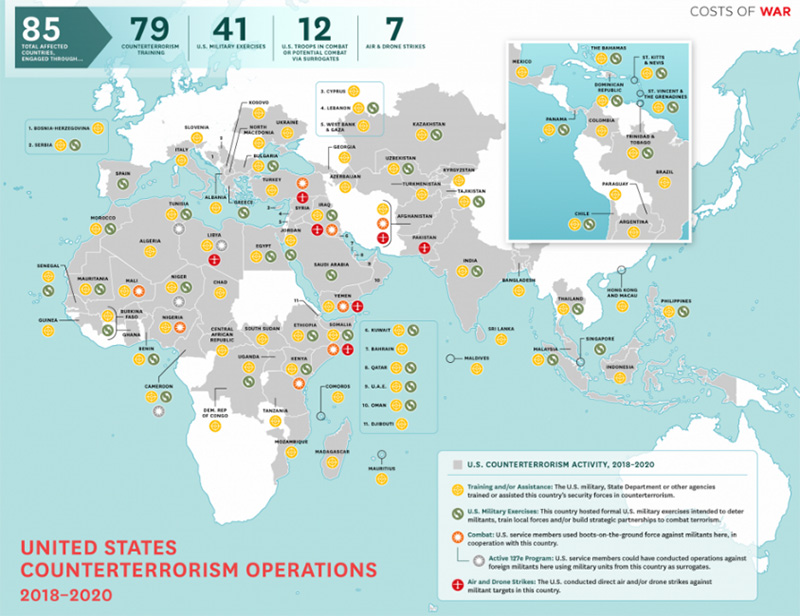
The full death toll of violence in the U.S.-led invasions of Afghanistan and Iraq, let alone of the broader global war on terrorism, remains difficult to determine. But it has long been surpassed by an even larger and more opaque figure: the indirect count of people who have died as a result of post-9/11 conflicts’ far-reaching ripple effects, such as ensuing waves of violence, hunger, the devastation of public services and the spread of disease, confesses “The Washington Post”.
Brown University researchers, in a report draw on U.N. data and expert analyses to attempt to calculate the minimum number of excess deaths attributable to the war on terrorism, across conflicts in Afghanistan, Pakistan, Iraq, Syria, Libya, Somalia and Yemen — impacts “so vast and complex that” ultimately, “they are unquantifiable,” the researchers acknowledge.
The accounting, so far as it can be measured, puts the toll at 4.5 million to 4.6 million — a figure that continues to mount as the effects of conflict reverberate. Of those fatalities, the report estimates, some 3.6 million to 3.7 million were “‘indirect deaths” caused by the deterioration of economic, environmental, psychological and health conditions.
More than 7,000 U.S. troops were killed in Iraq and Afghanistan, along with more than 8,000 contractors, according to Brown’s Costs of War project. And U.S. forces have suffered cascading effects of their own, including rates of suicide among veterans outpacing the general population.
But the vast majority of those killed in the fighting were locals: more than 177,000 uniformed Afghans, Pakistanis and Iraqis and Syrian allies had died as of 2019, according to the Costs of War project, alongside a vast count of opposing combatants and a disputed civilian toll.
“There are reverberating costs, the human cost of war, that people for the most part in the United States don’t really know enough about or think about,” said Stephanie Savell, the paper’s author and co-director of the Costs of War project.
In Iraq, estimated casualties from fighting range from 151,000 to 300,000 to 600,000 people, according to the new report.
“The Washington Post”, among other outlets, has documented severe discrepancies and official undercounting of death tolls from the U.S.-led coalition air and artillery strikes that targeted the Islamic State in Iraq and Syria. A Post investigation into casualty payouts in Afghanistan found the U.S. military had an “uneven, typically opaque handling of the civilian toll of battlefield operations.”
Since 2010, a team of 50 scholars, legal experts, human rights practitioners and physicians participating in the Costs of War project have kept their own calculations.
According to their latest assessment, more than 906,000 people, including 387,000 civilians, died directly from post-9/11 wars.
Another 38 million people have been displaced or made refugees.
The U.S. federal government, meanwhile, has spent over $8 trillion on these wars, the research suggests.
But Savell said the research indicates that exponentially more people, especially children and the most impoverished and marginalized populations, have been killed by the effects of war — mounting poverty, food insecurity, environmental contamination, the ongoing trauma of violence, and the destruction of health and public infrastructure, along with private property and means of livelihood, writes “The Washington Post”.

read more in our Telegram-channel https://t.me/The_International_Affairs

 10:32 20.05.2023 •
10:32 20.05.2023 •






















